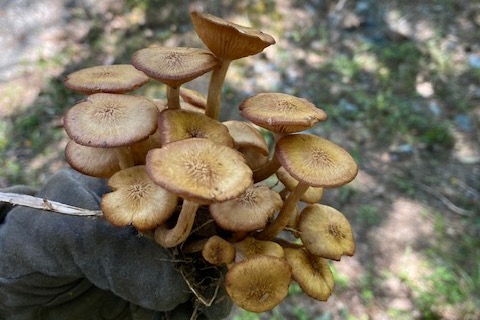
Sep 3, 2023
On Sunday, September 24 at 2 p.m., Pat Mitchell, co-founder and president of the Blue Ridge Mycological Society (which meets at The Quarry Gardens monthly) will give an illustrated talk and lead a discovery walk along the trails.
Pat’s talk will cover the world of fungi and their importance to the ecosystems we count on, how to learn more about the fruiting bodies we call mushrooms, and (since what most people want to know about wild mushrooms is how to eat them and not die), how to forage and eat wild mushrooms safely. To join the party, sign up at quarrygardensatschuyler.org/visit.
The Honey mushrooms (Armilliaria mellea) in the featured image were found Friday September 1 by Rivanna Master Naturalist and QGs volunteer Julie Farrell. Honey mushrooms are said to be edible—but not by everyone.
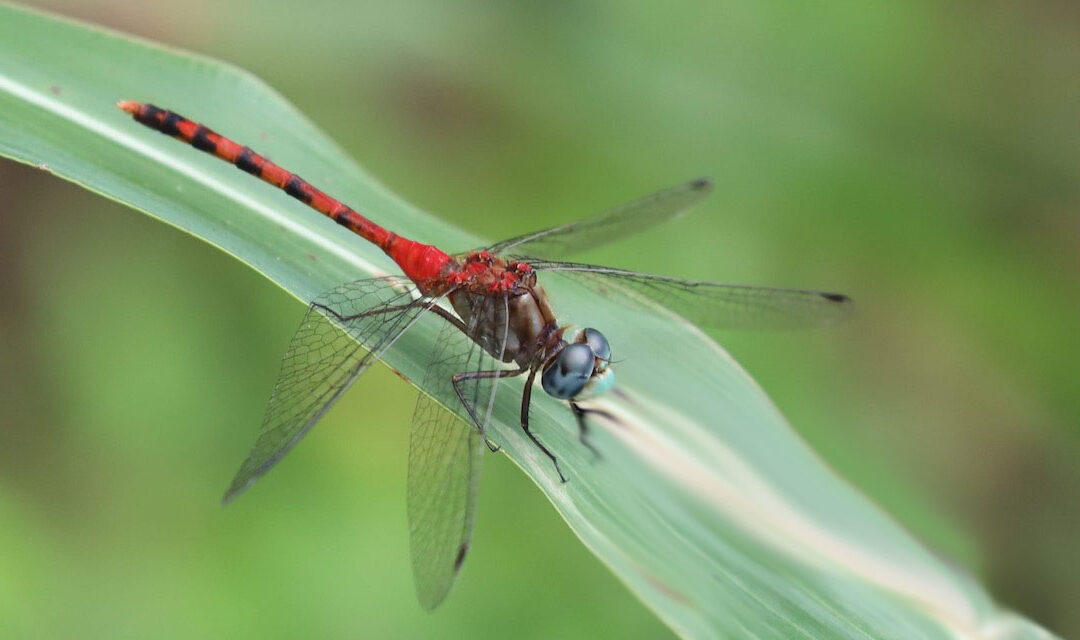
Aug 25, 2023
On Saturday September 16 from 1 to 3 p.m. Odonata enthusiast Cindy Andrews will give her stunning presentation of dragonflies and damselflies in the Quarry Gardens classroom—and then lead a trail walk to the damp and flowery places where these flying jewels may be found.
Why do we like odonates? Besides flying and posing beautifully, they eat mosquitoes by the thousands—and they don’t bite or sting.
Cindy is a Virginia Master Naturalist in the Riverine Chapter and a nature photographer. To join her, sign up at quarrygardensatschuyler.org/visit. Binoculars may help you spot these aerial delights, and a camera will help to preserve the thrills. Consider bringing a lunch to enjoy in our picnic pavilion before the event.
The featured image by Cindy is a Blue-faced meadowhawk (Sympetrum ambiguum), an easy-to-identify dragon found in September and October.
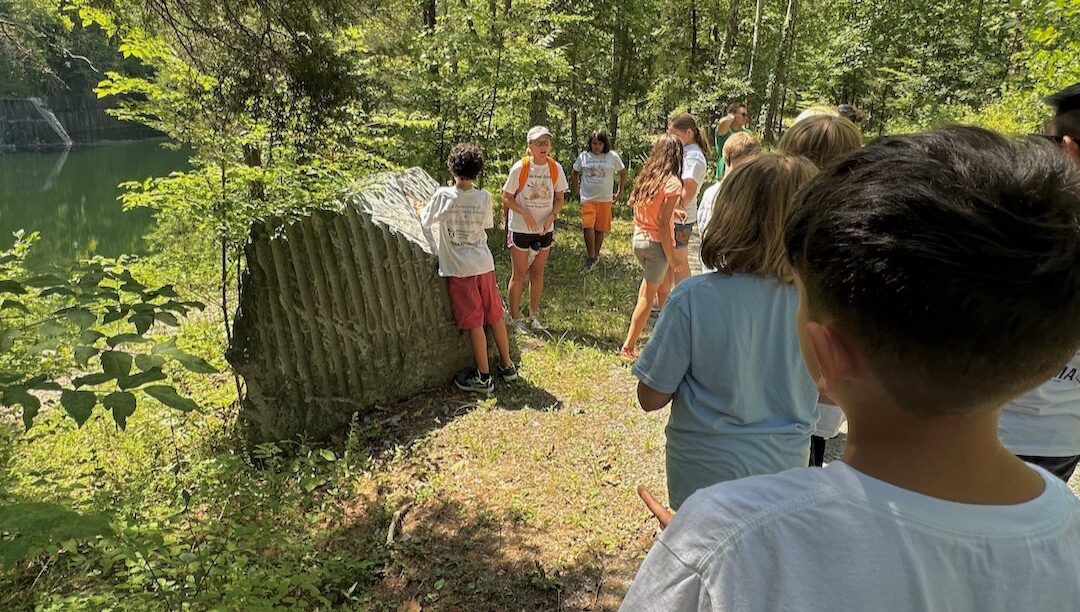
Aug 20, 2023
Thirty-two Nelson County campers in grades three to six made a field trip to The Quarry Gardens on Friday, August 19, for lessons in geology and habitat restoration.
The morning session included an introduction to historic soapstone mining and the QGs project, a tour of Visitor Center exhibits, and a walk and talk along the main trails led by founders Armand and Bernice Thieblot. After lunch in the picnic pavilion, Kathie Driscoll and Lindsey Hill gave on-site, hands-on lessons in wetland ecology and geology.
In the featured image, campers are taking turns rubbing a slickenside on a discarded soapstone boulder by the side of the road near the north quarry. A slickenside is a polished rock surface with parallel grooves formed by frictional wear during sliding and movement along a fault. Such movement on a large scale can cause earthquakes. The talc in soapstone made this one especially slick.
Tye River Elementary School sponsored this summer’s STEAM project (science, technology, engineering, art, and math)—called “The Kids Grow Green: Unearth the Unexpected”—with Nelson County Public Schools and a host of partnering organizations.
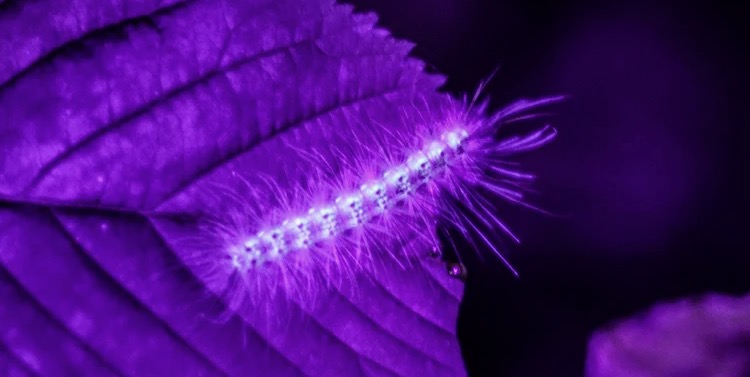
Aug 3, 2023
Did you know that caterpillars glow under ultraviolet light? In fact, using a UV flashlight makes them easier to find in the wild. And many are more active at night.
At the Quarry Gardens on August 26 from 6 to 8 p.m., Courtney McLaughlin, former Director of In-house Education at the Caterpillar Lab in Marlborough NH, will show how it’s done. (It helps to know which caterpillars eat what plants). Courtney is a wealth of information on the lives of caterpillars. Bring your own blacklight if you’d like to join in the search.
In any event be sure to bring a personal light—phone flashlight or head lamp—so that you can find your way back to your car at the end of the evening. There is no outside lighting at the Quarry Gardens. The Visitor Center will be open with restrooms, water, and snacks available. Come early if you’d like to bring a picnic to enjoy in our pavilion.
Sign up at quarrygardensatschuyler.org.
Bring your camera; we’d love to see your images. The featured image of a fall webworm moth caterpillar is from the Explore Ohio Website: https://www.exploreohiooutdoors.com/post/caterpillar-hunting-at-night
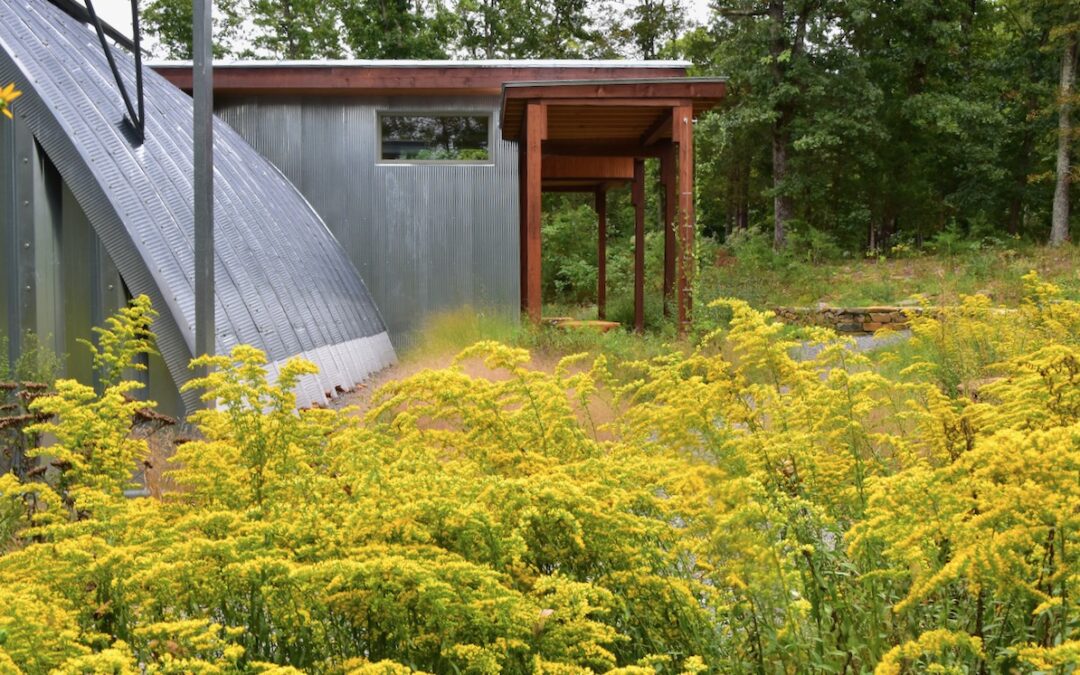
Jul 17, 2023
The Digital Atlas of the Flora of Virginia lists 21 species of goldenrod (Solidago) native to Nelson County. Twelve may be found at The Quarry Gardens, blooming from mid-summer through October. Early goldenrod (Solidago juncea) is blooming now. The featured image of Showy goldenrod (Solidago speciosa) was made in September.
Goldenrods produce pollen too heavy to be carried by wind. Studies by University of Delaware entomologist Doug Tallamy have found that they provide food and shelter for 115 butterfly and moth species in the Mid-Atlantic alone. In fall, monarch butterflies depend on them for nectar to fuel their long migrations, and in winter songbirds find nourishment in the seed heads. Historically, goldenrods have been used in folk medicine. The name, solidago, means “to make whole.”
Except for a few, such as Sweet goldenrod (Solidago odora) which smells like anise, and Silverrod (Solidago bicolor) which is actually white, they are not easy to tell apart. That’s why we’re glad to have a key to the species, prepared by Devin Floyd and Drew Cheney of the Center for Urban Habitats; we’ll happily share it with you when you visit. We promise, none of our goldenrods will make you sneeze. That’s likely to be ragweed; its light pollen travels on the wind for miles.




